- HMI Leaders Award 2016
- HSE Expected To Fine Hospitals
- “Dr. Lucy” takes Tallaght by storm
- Follow up inspections for one fifth of hospitals
- Mediator appointed in governance row
- European Bank invests €70 million in primary care centres
- Masters in Human Factors in Patient Safety
- New Neurology Research & Assessment Unit
- Digital connection for all HSE staff
- CEO of ISQua
- Patients are malnourished
- New cross border service
- HSE Interim Deputy DG
- Nursing Board Chief Executive
- Clinical Programme for Self Harm Management
- HIQA’s 2016 – 2018 Corporate Plan
- Increasing number of transplants
- Saving up to 30 lives annually
- Almost 90% of adult CF patients had an exacerbation in a year
- Go-ahead for children’s hospital
- Tackling healthcare infections
- Nine out of ten health professionals have clean hands
- Global CEO of Special Olympics
- Drop in Irish abortion rates
HMI Leaders Award 2016

We have been thrilled once again by the response to the HMI Leaders Award. This is the third year of the awards and the enthusiasm and dedication of applicants really shines through. The response has come come all corners of the health service. From the numbers of applications received, we can see that the spirit of innovation and commitment to improving service delivery is alive and thriving. We have received applications from a huge range and types of projects and are glad to report that the number received this year is on a par with 2015.
Regional panels have now begun the shortlising process. From there a number of applicants will be called to present to one of the panels. The panels are:
- Dublin North East
- Dublin Mid Leinster
- South and West

Those being called to present to a regional panel will be notified. From each regional event one project will be chosen to present to the national panel. Regional panels may also award commendations.
Presentations to the national panel will take place on June 24 2016 in the RCPI in Kildare Street, Dublin 2. The overall winner of the HMI Leaders Award for 2016 will be announced following the presentations.
HSE Expected To Fine Hospitals
The HSE is expected to “fine” hospitals which have breached their ED waiting times and possibly their waiting list targets for the first months of 2016.
The HSE fined Hospital Groups whose constituent hospitals failed to meet targets a total of over €3.76m for the last five months of 2015.
Asked if it planned to continue to fine hospitals this year and if so, details of these fines, a spokesperson for the HSE said “This data is not yet validated and has not been released publicly.”
This statement certainly indicates that the Executive is continuing the practice in 2016.
Initially last year the HSE fined hospitals which failed to meet waiting list targets.
Managers argued that they were breaching waiting list targets because of lack of resources and because they were trying to keep their ED waiting times down. They said it was virtually impossible for them to meet both elective admission and ED waiting time targets, as they impinged directly on each other.
The HSE seemed to have accepted the thrust of this argument as in November 2015 it stated that hospitals which met their ED targets would have their fines “deferred” if they breached their waiting list targets.
It was also understood that they were considering abandoning the practice entirely but that does not now seem to be the case.
“Dr. Lucy” takes Tallaght by storm
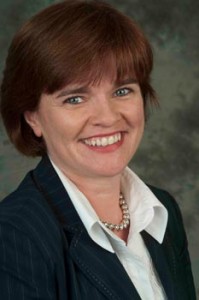
A new “Consultant” who joined the staff of Tallaght Hospital Dublin, with the support of the executive management team, has enabled her colleagues to increase significantly the number of patients whom they can see each day, thereby reducing patient waiting times and the strain on the Emergency Department, writes Maureen Browne.
Known colloquially as a robot doctor, ‘Dr. Lucy’ is a modern tele-presence device which enables Consultants in Tallaght to care for their patients even though they may not be physically present in the ward or the bedside at the time.
The robot doctor is essentially an Ipad holder on an extendable metal pole with a two-wheeled self balancing electrical vehicle at its base. The two large wheels stabilise themselves and Consultants can dial into it on any computer, mobile or tablet with an internet connection.
“Dr. Lucy” can be driven right up to the patient and enable the Consultant on the other end to interact with the patient.
Lucy Nugent, Chief Operations Officer at Tallaght Hospital said ‘Dr. Lucy’ had been introduced to the hospital as part of the Acute Surgical Assessment Unit (ASAU), a project under the Irish Hospital Redesign Programme.
She said Tallaght Hospital had the busiest Emergency Department in Ireland, with over 81,000 patients seen each year (48,000 adult and 33,000 children),
“As a way of expediting care, reducing the strain on our ED, reducing patient waiting times while allowing quick access to senior decision makers, a novel combination of a new acute assessment unit and tele-presence mobile robotics was introduced in the hospital.
“The Acute Surgical Assessment Unit (ASAU) is an urgent care model whereby selected acutely unwell surgical patients presenting to the ED can be diverted to the unit where they are met by the on call service and placed into rapid treatment pathways. The unit enables medical staff to ensure patients are cohorted, seen and assessed quickly so safe and efficient decisions can be made early in their care.”
‘Dr. Lucy’ allows patients quick access to a senior decision maker early in their hospital journey, which was one of the priorities of Acute Surgical Assessment Unit.
“’Dr. Lucy’ is not quite human, but very close to it. Apart from the fact that we cannot reach out and touch our patients, which is admittedly very important, she fulfils most of what we want,” said Prof. Paul Ridgway, Consultant Upper GI, Pancreatic and Hepatobiliary Surgeon at Tallaght Hospital.
“We mainly use ‘Lucy’ in the Acute Surgical Assessment Unit and we also use her on ward rounds. I might be doing an endoscopy while on-call and while I might be unable to actually get to the patient I can dial down between patients rather than waiting for the list to be finished. The same applies to surgery and I lecture in Trinity and ‘Lucy’ lets me to dial in between lectures.
“As modern Consultants can work in a number of institutions it is very useful to be able to dial in from wherever you are. ‘Lucy’ has enabled us to be more efficient in delivering diagnosis after assessment, reaching a decision to admit and initiating therapy.
“’Lucy’ and I can move around the ward or the hospital with my team and communicate very effectively with patients. Because she has the ability to extend to five feet in height or drop down to eye level if the patient is lying in bed, we can interact with patients at eye level at all times.
“Interestingly, our initial research has shown that patient acceptability has been very much higher than we expected. And this is not just with the younger age group where it might have been expected, but also with people in the older age group who have taken her on board much faster than we expected. We are now validating the ward round with and without ‘Lucy’.
“David Wall, our Head of ICT, has made sure that from a patient’s and data safety perspective, ‘Lucy’ complies with all relevant standards and we can securely dial into our patients remotely with a secure encrypted password and offer them a speedier and more efficient route to senior decision making, maybe on site and maybe not.
“‘Lucy’ cost €2,600 and we reckon she has already paid for herself as she has worked very hard.”
Follow up inspections for one fifth of hospitals
While Irish hospitals and staff have shown commitment and progress in improving hand hygiene practices, poor levels of overall environmental cleanliness were exposing patients to the risk of Healthcare Associated Infections according to HIQA.
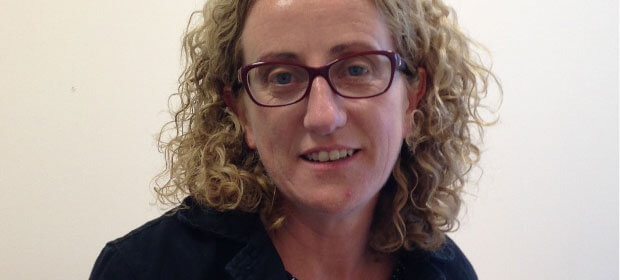
The Authority said that one in five hospitals inspected in 2015 required a follow-up inspection for poor hygiene and maintenance issues. This represented a significant increase compared to 2014 where one in ten hospitals required re-inspection.
Thirty-nine unannounced inspections were carried out by HIQA in 32 public acute hospitals between January 2015 and December 2015. The aim of these inspections was to assess compliance against the National Standards for the Prevention and Control of Healthcare Associated Infections.
HIQA said the inspections showed:
- Seven of the 32 hospitals inspected required a follow-up inspection primarily due to poor hygiene standards observed during inspections and poor maintenance and management of the environment and facilities.
- In six of the seven re-inspections, hospitals had addressed most of the risks indentified. However, no improvement in the standard of environmental hygiene was recorded in one hospital re-inspected. During the course of the 39 inspections, 64 clinical areas were inspected including high-risk areas such as operating theatres, endoscopy suites, haematology, oncology, intensive care and coronary care units.
HIQA said: “Some re-occurring findings relating to infrastructural deficiencies and maintenance included units that were outdated with inadequate infrastructure from an infection prevention and control perspective. Overcrowding with limited spacing between beds was an issue for staff trying to circulate and manoeuvre patients. The lack of pro-active maintenance programmes resulted in worn and poorly maintained surfaces which do not facilitate effective cleaning.”
The 2015 inspection programme saw the assessment of infection prevention care bundles for the first time. An infection prevention care bundle is a set of routinely applied evidence based actions that, when applied consistently, have been proven to reduce the incidence of infection and protect patients – this is particularly relevant in preventing infection through the use of invasive medical devices
HIQA said “More than half of hospitals inspected in 2015 (59%) need to take action to improve the preparation, labelling and storage of intravenous medication in the clinical area. Failure to adhere to these practices potentially increases the risk of transmission of infection. Observations during inspections included pre-prepared syringes of medicines which were unlabelled or insufficiently labelled, inappropriately stored and left unattended and unsecured.
Susan Cliffe, Head of Healthcare, HIQA added: “It was evident during inspections in 2015 that overall, a greater culture of compliance with hand hygiene has begun to emerge in most hospitals. This observation is supported by the reported findings from the HSE national audits that have shown steady improvement over time.
Mediator appointed in governance row
Mr. Kieran Mulvey, head of the Workplace Relations Commission has been asked by Health Minister, Simon Harris, to act as mediator in the governance dispute between the National Maternity Hospital in Holles Street, Dublin and the St. Vincent’s Healthcare Group.
This followed a meeting between the Minister and representatives of the two hospitals.
The governance dispute has arisen because Holles Street wants to continue its own separate governance, including the Mastership system, when it moves to the Elm Park campus, but the St. Vincent’s Healthcare Group is insisting that when Holles Street services are transferred it must become part of the St. Vincent’s governance.
The relocation of Holles Street services to the St. Vincent’s Campus was first proposed in 1998 and the design for the €150m hospital is now ready for submission to An Bord Pleanala.
The Independent Review of Maternity and Gynaecology Services in the Greater Dublin Area carried out by KMPG for the HSE and published in 2008 recommended that the co-located hospitals would operate under a single system of clinical and corporate governance for the campus.
However, it was believed that all sides had subsequently agreed that the 2008 KPMG report was superseded by other reports and by the recent National Maternity Strategy, which endorsed the Mastership system
St. Vincent’s wants the role of Master, which is currently occupied by Dr. Rhona Mahony, replaced by a single clinical director who would report to the Healthcare Group CEO. It says it cannot operate a large healthcare campus with “competing systems” of clinical and corporate governance.
In a letter to the Irish Times this month the Masters of the three Dublin Maternity Hospitals said the Mastership model had served women and infants well over the past 260 years, and currently provided excellent clinical outcomes.
Dr. Rhona Mahony, Master of Holles Street Hospital, Prof. Fergal Malone, Master of the Rotunda Hospital and Dr. Sharon Sheehan, Master of the Coombe Women & Infants Hospital wrote: “We are strongly of the view that for tertiary maternity and neonatal services the mastership model is the appropriate model operating in the best interest of women and infants.
“When the National Maternity Strategy was launched in January 2016 it articulated, for the first time in Ireland, a vision for the future of maternity services. This vision aspires to safe, high-quality care in a setting that is most appropriate and dedicated to women and infants. To this end, current Government policy determines that the four standalone maternity hospitals in Dublin and Limerick be co-located on the campuses of acute adult teaching hospitals. In this way, women will have access to care in an appropriate infrastructure and, on the occasions required, women are in close proximity to the broad range of adult services on an acute adult hospital campus. This is a similar concept to the campus approach of the new children’s hospital planned on the St. James’s campus.
“The National Maternity Strategy also supports the retention of the mastership model, comprising an executive management team which balances clinical, administrative and financial function, reporting to a dedicated Board. This model has served women and infants well over the past 260 years, and currently provides excellent clinical outcomes.
European Bank invests €70 million in primary care centres
The European Investment Bank is to invest €70 million in 14 Primary Care Centres across Ireland.
The new Primary Care Centres will be built in counties Sligo, Roscommon, Mayo, Limerick, Tipperary, Waterford, Wexford, Kildare and Dublin.
The Department of Health said that people would be able to access, in their local community, a wide range of services including GP, community nursing, dental, occupational therapy, physiotherapy, social work, speech & language therapy, mental health, counselling, home help and nutrition. The Centres would be open at least five days a week, with extra hours at weekends and evenings for some services.
EIB is joined in this enterprise by Bank of Tokyo Mitsubishi UFG (BTMU) and Talanx, a German based insurance company.
This is the EIB’s first ever capital investment in Irish health facilities and the Primary Care Centre PPP project is one of the first projects to be financed under the European Fund for Strategic Investment Initiative established to support investment across Europe.
The Bank of Tokyo Mitsubishi UFG (BTMU) and Talanx are providing the balance of the significant finance required and are also for the first time investing in Irish health care facilities.
The project is being delivered by the consortium comprised of Prime, Balfour Beatty and its investors Prime UK Holdings Ltd and HICL Infrastructure Company Ltd. In May 2015, the consortium was announced as the Preferred Tenderer for the 25-year PPP (design, build, finance and maintain contract).
Minister for Health Simon Harris T.D. said “On behalf of the Government we are delighted to welcome their significant investments in terms of expertise, funding, resources, employment opportunities and a 27 year partnership that extends from construction through 25 year facility maintenance. We look forward, with their support and assistance, to the delivery of state of the art 21st century health care facilities.”
Masters in Human Factors in Patient Safety
RCSI has introduced an MSc in Human Factors in Patient Safety, which deals with the relationship between human beings and the systems within which they work.
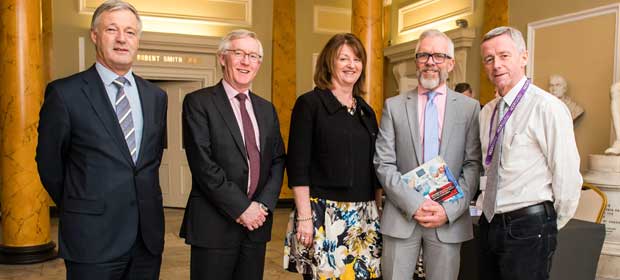
RCSI says the Masters, which is tailored for those involved in the care of surgical patients will be of interest to surgeons, nurses, physiotherapists and allied health professionals. It focuses on issues such as team-working, decision-making, leadership and enhancing efficiency, with the goal of minimising errors and improving patient safety.
This two-year part-time Masters is approved by RCSI, the National University of Ireland and the Nursing and Midwifery Board of Ireland, and positioned at Level 9 on the National Framework of Qualifications.
This unique programme is led by Prof. Oscar Traynor and Dr. Eva Doherty. Dr. Doherty said that “this new Masters is designed and delivered by health professionals to meet the learning needs of inter-professional teams working together in acute Irish hospitals. We believe that health professionals who work together should learn together”.
To find out more or register your interest in the programme, please visit www.rcsi.ie/pghumanfactors.
New Neurology Research & Assessment Unit
Tallaght Hospital’s new Neurology Assessment & Research Unit which has been officially opened will offer enhanced space to review patients with neurological diseases.
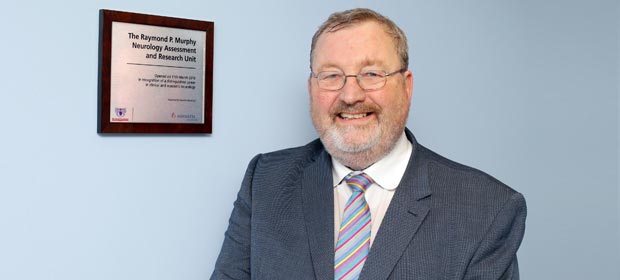
It was officially opened by recently retired Dr Raymond Murphy, a former neurologist at Tallaght Hospital and the Adelaide Hospital. This new facility incorporates a research unit which forms part of the Trinity College Academic Unit of Neurology.
The unit has been equipped with an ocular coherence tomography machine, making the Department of Neurology in Tallaght Hospital the only unit in the country with dedicated access to this technology. This non-invasive imaging technique can be used to generate high resolution, three dimensional images of the retina for use in research of neurological disease and the monitoring of drug complications involving the retina.

While Tallaght Hospital provides services for chronic neurological disease in a catchment area of over 500,000 people, it has not previously had a dedicated space to cater for such patients.. In addition, nurse specialists will be in a position to provide education to patients.
David Slevin, CEO, Tallaght Hospital, said; “The opening of this new Neurology Research and Assessment Unit is a testament to the important emphasis that Tallaght Hospital places on improving patient experience while receiving care and on the value of research in improving the quality of care we provide. I wish to congratulate all those who spearheaded this project and Dr. Raymond Murphy who has quite rightly been acknowledged for his immense contribution over a long and distinguished career in neurology.”
Digital connection for all HSE staff

HSE Director General, Mr. Tony O Brien has announced plans to have all HSE staff digitally connected by the end of the year. This ambitious project will provide e-mail and online connectivity to over 30,000 staff in the health services who currently do not have access to digital tools to support them in their roles.
Said Mr. O Brien: “I want the HSE to have a more digitally connected workforce. The modern healthcare system must value connectivity highly and we need to embrace this in every way we can. In investing in our staff, and supporting them with the tools they need, we in turn are better able to provide a safer, more efficient and ultimately better service to our patients and to the public.”

At present, 30,000 HSE staff have no digital identity but by the end of 2016, all these individuals will have been provided with access to e-mail to enable them to have a healthcare digital identity.
A further 10,000 staff members working in primary care in community settings have no IT tools to support them in their roles. This project will provide all of these staff with a digital device and the tools and support to use them in their work by the end of the year.
The project is being led out by the HSE’s Chief Information Officer, Mr. Richard Corbridge and eHealth Ireland. Said Mr. Corbridge: “This is a great opportunity to get all our staff digitally connected. We are committed to delivering on our Knowledge and Information Plan to provide a secure information structure. We are all aware of the significant contribution that IT is making in providing innovative solutions within healthcare. Equally we know that the pace of advance and development is accelerating. We want all our staff to be connected and to be facilitated and empowered to participate, belong and ensure our patients and our public are the ultimate benefactors.”
CEO of ISQua

Dr. Peter Lachman has been appointed CEO of The International Society for Quality in Health Care (ISQua).
ISQua, which is based in Dublin, is aimed at inspiring, promoting and supporting continuous improvement in the quality and safety of healthcare . ISQua’s achieves this goal through education and knowledge sharing, external evaluation, supporting health systems and connecting people through global networks.
Said Dr. Lachman: “I joined ISQUa as it offers the opportunity to spread Quality Improvement and Patient Safety teaching and practice worldwide. I aim to build on the existing programmes we have in education, conferences and accreditation. In particular, I would like to attract frontline staff of all professional groups to be come active members of ISQua. In Ireland I hope to work collaboratively with clinicians, managers, the HSE and DOH to continue to enhance the services provided for patients.
Dr. Lachman will continue to work with the RCPI and the HSE in delivery of their QI programmes.
Patients are malnourished
One in four patients admitted to Irish acute public hospitals is affected by malnutrition, according to a new HIQA review on nutrition and hydration in public acute hospitals.
It says nutrition and hydration care are not viewed as a priority for some Irish hospitals.
The report said malnutrition affected more than one in four patients admitted to hospital. Despite this, 21% of public acute hospitals did not have a system of screening in place for the risk of malnutrition.
The annual healthcare costs associated with disease-related malnutrition were estimated at €1.5 billion in a 2012 study.
Susan Cliffe, HIQA’s Head of Healthcare, said: “Food should be seen as an integral part of a patient’s treatment, rather than a ‘hotel service’ provided by the hospital. Many patients experience unintentional weight loss of over 10% of their body weight prior to admission and their nutritional status often deteriorates while in hospital. Nutrition and hydration are fundamental to their treatment and recovery plan of care.
“It is recognized internationally that malnutrition and dehydration can compromise the quality of life of patients, affect their recovery and cause unnecessary illness and death. In patients at risk, it can go undetected unless systems are in place to identify and manage it.”
As part of the review, HIQA analysed information from 42 hospitals, carried out unannounced inspections in 13 of these hospitals, spoke with 579 patients and 363 staff, and reviewed 322 patient healthcare records.
It found that while many hospitals demonstrated a commitment to promoting and leading improvements in nutrition and hydration, there was a wide variation in findings.
Susan Cliffe added: “Every patient should be screened for risk of malnutrition within 24 hours of admission to hospital. Our review shows that only half of the 42 hospitals are doing this on more than 75% of wards. One in five hospitals has no system of screening for risk of malnutrition in any area of the hospital. Hospitals who have not introduced such screening to date must now proceed, without delay, to implement a system to ensure that all patients are screened for the risk of malnutrition on admission to hospital in line with evidence-based practice”.
Offering and providing drinking water for patients is a basic care requirement. However, HIQA found examples of where the hydration needs of individual patients were not being met.
This mainly applied to patients in emergency departments who were deemed to be admitted, but who remained there for lengthy periods while waiting for a bed in the main hospital.
While all 42 hospitals had stated in advance of inspections that patients had access to fresh drinking water, HIQA inspectors found that drinking water was only topped up by staff during the day in most inspected hospitals if a jug was seen to be empty or at a patient’s request.
In a number of emergency departments, patients who were not mobile and could not access the water cooler were not routinely being offered drinks. In addition there was a lack of consistency in the meals offered to patients in emergency departments.
Less than one in three hospitals inspected had a system to replenish water jugs with fresh water during the afternoon so as to ensure that patients always had access to fresh water.
HIQA said access to drinking water should not depend on relatives and visitors and hospitals must ensure that all patients have access to fresh drinking water as required.
Susan Cliffe concluded: “Hospitals need to improve governance of nutrition and hydration to support improvements in screening patients for risk of malnutrition, develop evidence-based policies and audit nutrition and hydration care. Hospitals should strive to improve patients’ experience of hospital food and drink by engaging with patients about food variety and choice. A key feature of this process is the evaluation of patients’ experience of nutritional and hydration care and using patients views to inform and direct change or to reinforce good practices where they exist.
New cross border service
A new cross-border cardiology service will give Donegal patients suffering from a STEMI heart attack direct access to services in Altnagelvin Hospital in Derry.
Up to 60 patients suffering from a STEMI heart attack will be treated in Altnagelvin every year. Previously, patients from the region had to be transported to University Hospital Galway so this represents a big saving in terms of treatment time and also distance.
This is the latest cross-border medical service to be provided. A further step will be to give access to radiotherapy services at Altnagelvin for patients from the Republic.”
Patients within 90 minutes’ travelling distance of Altnagelvin Hospital will now have access to 24/7 primary Percutaneous Coronary Invention (PPCI) at the Hospital. It means that STEMI heart attack patients will have rapid access to high quality services on their doorstep.
In a further development, the Saolta Group has appointed a Consultant Interventional Cardiologist at Letterkenny University Hospital, who will help to deliver the pPCI service from Altnagelvin.
HSE Interim Deputy DG
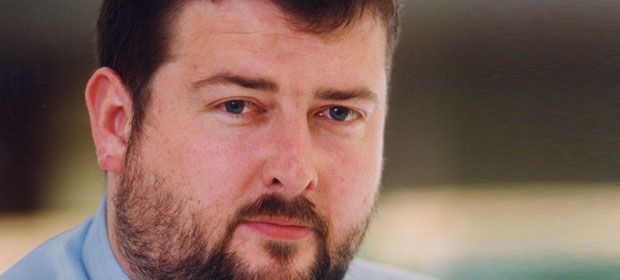
Stephen Mulvany has been appointed Interim Deputy Director General of the HSE. Mr. Mulvany is already Chief Financial Officer of the HSE.
His latest appointment follows the departure of HSE Deputy Director General, Ms. Laverne McGuinness, who moved to the private sector.
Nursing Board Chief Executive
Mary Griffin has been appointed as Chief Executive of the Nursing and Midwifery Board of Ireland (NMBI), Bord Altranais agus Cnáimhseachais na hÉireann, the regulator for the nursing and midwifery professions. She is due to take up her new post next month.

A native of County Clare Ms. Griffin previously worked with CORU, the Health & Social Care Professionals Council, Ireland’s first ever multi–profession regulator. In CORU she established and led the Corporate Affairs function. She previously worked in management consulting and operations roles across both the public and private sector over a 25-year period.
Ms Griffin holds a BSc in Economics and Management and an MBA. She succeeds Dr Maura Pidgeon in the role of CEO of NMBI,
Essene Cassidy, NMBI President, said: “Mary was instrumental in the establishment of a new patient-focused independent regulator and its delivery of governance and change. She brings significant and diverse experience to this role with NMBI. Her understanding of the public sector and the health system, along with her management expertise and insight, will ensure we can fulfil our statutory responsibility to protect the public, but also meet the needs of nurses, midwives and our wider stakeholder community into the future.”
Mary Griffin said: “I am delighted to be working with the Nursing and Midwifery Board of Ireland. They have an ambitious reform agenda and a team that is committed to building a world class regulatory service. I am delighted to be joining the organisation and believe it will be both exciting and rewarding.”
Clinical Programme for Self Harm Management
A NEW Clinical Programme for Management of Self Harm Presentations in Emergency Departments has been launched by the HSE.
It is aimed at providing a standardised process for the assessment and management of people of all age ranges who self-harm.
The HSE says the process guarantees people in distress a timely assessment leading to triage and on to needs based follow up by skilled clinicians.
The new Clinical Programme has been welcomed by the College of Psychiatrists of Ireland.
Dr. Ruth Loane, President of the College of Psychiatrists of Ireland said:
“We are delighted to see this programme launched and with it a clear pathway of support and treatment plan for those who find themselves in distress in the emergency department following self-harm or with prominent suicidal ideation. I would like to specifically thank two College members, Dr. Siobhán MacHale (Chair of the Programme subgroup) and Dr. Eugene Cassidy for their time and commitment to the development of this programme.”
Dr. Loane emphasised that “the aim of the programme is also to reduce repeated self-harm rates, improve access to interventions and timely linkage to follow up care which we all hope will be achieved. There is a clear process for involving families and carers in supporting their loved ones which is to be welcomed.”
HIQA’s 2016 – 2018 Corporate Plan
HIQA has published its Corporate Plan for 2016- 2018, which outlines the direction and focus of the organization for the next three years.
Chairperson of the HIQA Board, Brian McEnery said: “People have a right to expect safe, effective, high-quality care when receiving health and social care services. Our new Corporate Plan enables HIQA to continue to be an independent central driving force in improving the health and social care system in Ireland.”
A six-week public consultation was carried out on the draft Corporate Plan 2016–2018, following which the Board of HIQA approved and submitted the Corporate Plan to the Minister for Health.
Chief Executive of HIQA, Phelim Quinn said: “During the lifetime of this plan, HIQA will implement strategic initiatives that focus on improving safety, quality and protection of children and adults’ rights and their experience of care through the development of standards, our independent monitoring and regulation programmes, and reporting on our findings. We are committed to further advancing health information and eHealth as well as continuing to build capacity to conduct and use health technology assessments across the health system. We plan on leading a partnership in developing the first National Patient Experience Survey in Ireland over the next three years to further improve the quality of care received in our services.
“Throughout all our work, we will ensure that we actively engage with the public and our stakeholders to communicate the work of HIQA in a clear and accessible way.”
The full Corporate Plan 2016–2018 can be found online at www.hiqa.ie.
Increasing number of transplants
An increasing number of transplants were carried out in Ireland last year.
The number of heart and lung transplants increased from 43 in 2013, to 49 in 2014 and to 52 in 2015.
The first combined heart and lung transplant in Ireland was also carried out last year.
The total of 36 lung transplants last year was a record, and the 16 heart transplants was the second highest achieved in a year.
A total of 153 kidney transplants were carried out in Ireland in 2015, with an increase in the number of live donors (33) compared to previous years.
In 2015, a total of 61 liver transplants were carried out. This is the second highest figure on record and it represents a significant increase on the 2014 total.
Saving up to 30 lives annually
Up to 30 lives a year will be saved through the introduction of a new standardised treatment for heart attack patients, according to the HSE.

Speaking at the launch of a report entitled “Heart Attack Care in Ireland 2014”, HSE Director General Mr. Tony O’Brien noted how the report demonstrated that “in 2014, 92% of appropriate patients received angioplasty compared with 55% in 2011. For our patients, this means a better service and more life saving opportunities.”
According to Prof. Kieran Daly, Clinical Lead Programme for ACS: “International evidence has shown that PPCI (angioplasty) intervention is most effective if the dedicated centre can be reached within 90 minutes of diagnosis. The aim of our programme, established over two years ago, was to save lives by standardising the care of these patients across the country. And at 92%, our high level of PPCI (angioplasty) access compares favourably with other countries such as Wales at 72% and England at 97%.”
The establishment of dedicated cardiology teams in the PPCI centres allowing for the maintenance of a 24/7 service with direct access Catheter Laboratories has been an essential development.
If a STEMI heart attack patient cannot be transferred to a PPCI centre within 90 minutes, they will be transferred to the nearest Hospital Emergency Department to allow for thrombolysis to be administered. Helicopter transfer for STEMI heart attack patients to the PPCI centre is also an option in certain areas.
According to Prof. Daly, a new cross border service will mean 90% of the population nationally will have access to a PPCI centre within 90 minutes. “We have been building this service over the last three years and this is a significant development. The small proportion of patients outside this 90 minute transfer time are also dealt with according to national protocols through thrombolysis and then transferred on an urgent basis to a PPCI centre. All international programmes face similar challenges but we feel we are succeeding in reaching a very high percentage of our population at present.”
The designated 24/7 centres are: St James’s Hospital, Dublin; Cork University Hospital; Galway University Hospital; Mater Misericordiae University Hospital Dublin; University Hospital Limerick. University Hospital Waterford operates as a PPCI centre on a nine to five, Monday to Friday basis supplemented by a thrombolysis service out of hours.
A new service in the North West features an innovative cross border service that will give Donegal patients suffering from a STEMI heart attack direct access to services in Altnagelvin Hospital, Derry. It is anticipated that up to 60 patients a year will be treated in the Derry hospital.
Almost 90% of adult CF patients had an exacerbation in a year
Eighty nine per cent of adults with cystic fibrosis had an exacerbation requiring treatment in the previous 12 months, according to a survey carried out by Cystic Fibrosis Ireland at the end of last year.
The survey in which almost one quarter of the adult cystic fibrosis population in Ireland responded, showed that 39% of adults living with cystic fibrosis spend three or more hours a day completing their treatment, while 80% per cent spend more than an hour a day on treatment.
Ninety five per cent of adults with cystic fibrosis prioritised increased life expectancy and 90% fewer exacerbations/infections as the care outcomes that mattered most when it came to their treatment, with 85% identifying fewer courses of intravenous antibiotics/hospital stays.
Thirty one per cent of adults with cystic fibrosis are unemployed or unable to work due to cystic fibrosis, 58% of adults with cystic fibrosis report that it impacts on them financially, pointing to a reduced ability to gain employment and the expenses incurred with regular hospital visits.
Mr. Philip Watt, Chief Executive, Cystic Fibrosis Ireland, said “Orkambi, the new and innovative cystic fibrosis drug currently being assessed by the HSE in Ireland has been shown to reduce exacerbations and hospitalisations by up to 40% for those eligible to take this drug—or about half of the patient population. It has the potential to benefit some 450 people with cystic fibrosis in Ireland while, in time, if it is extended to those under 12 years of age, as many as 600 people will be able to benefit.
“So while there is an additional treatment cost in the short-term—and we would urge both Government and the provider to agree a way forward on this as a priority—there are savings arising in other areas of cystic fibrosis-related care with reduced hospitalisations and people able to contribute more fully to society in jobs.
Go-ahead for children’s hospital
An Bord Pleanala has approved planning for The New Children’s Hospital and research centre at St. James’ Hospital Campus in Dublin.
Costing over €700 million, it will be the single biggest capital project in the history of Irish healthcare.
The outgoing Government approved funding for the project and included it in the Capital Plan 2016-21. Enabling works are due to begin this summer.
The decision also means that work can start on two satellite centres at Connolly Hospital and at Tallaght, providing services right across greater Dublin. These are due to open in 2018.
The new Children’s Hospital will support regional hospitals across Ireland with the object of ensuring that services are provided as close to home as possible.
Tackling healthcare infections
The HSE has established a National Taskforce to direct and coordinate an effective system-wide response to Healthcare Associated Infections and Antimicrobial Resistance.
The Executive said key priorities identified for 2016 and contained in the HSE National Service Plan included reviewing the organisational approach to HCAI and Antimicrobial Resistance to ensure that every healthcare worker across the healthcare system recognises that infection prevention is a key element of all aspects of clinical work.
The aim of the new multi-disciplinary high-level group is to oversee and ensure the following aims are achieved:
- Ensure rational antimicrobial use across all healthcare settings
- Effective diagnostic support for infection.
- Reduce incidence of Multi Drug Resistant Organisms (MDROs)
- Decrease incidence of Healthcare Associated Infections (HCAIs)
- Improve professional education, training and public engagement
- Promote wider understanding of the need for appropriate use of antibiotics
- Compliance with HIQA Standards for Prevention of HCAI across all healthcare settings
“Ensuring medicines are managed safely and securely throughout our hospitals is a key patient safety objective. This includes handling of all IV preparations (preparation, labelling and storage). Quality Improvement Programmes are in place for the relevant hospitals to ensure that these practices highlighted in the reports are addressed,” said the HSE.
The report also notes that new buildings, refurbishments and upgrade programmes in the planning stages, or commenced during 2015, will address some of the infrastructural and environmental deficiencies identified and assist in meeting compliance requirements. “The HSE acknowledge that ongoing targeted investment is required to address deficiencies in hospital infrastructure and is committed to supporting refurbishment programmes in our hospitals within allocated resources. In order to address high risk areas, Hospital Groups are required to quantify the cost of required improvements over the next five years.”
Nine out of ten health professionals have clean hands
Hand hygiene compliance rates are reported to be at their highest ever levels as the latest data from national audits shows that almost nine out of ten health professionals in Irish hospitals have clean hands.
“Hand hygiene compliance rates in Irish hospitals now stands at 89.2%, marginally below the HSE target of 90%, according to the HSE’s Clinical Lead in Healthcare Associated Infections, Dr Robert Cunney.
“Hand hygiene is the single most effective measure that healthcare workers, patients and the public can undertake to prevent healthcare associated infection which affect hundreds of millions of patients around the world every year.
“The HSE aims to build on improved rates of hand hygiene compliance amongst healthcare workers and spread this improvement in healthcare facilities outside of acute hospitals.
“The latest hand hygiene compliance rates show an overall compliance rate of 89.2% in late 2015, a significant improvement on the 74.7% achieved in 2011 when hand hygiene audits were introduced. The progress to date is very welcome, but improving it further is a priority for the HSE.
“The HSE has set a target of achieving rates of compliance of more than 90% and work is on-going with healthcare facilities to implement action plans including education, training and re-audit programmes to reach this goal.
The HSE has a dedicated HSE hand hygiene web page. Visit www.hse.ie/handhygiene to see videos, posters and other useful resources.
Global CEO of Special Olympics
Mary Davis has been appointed Global CEO of Special Olympics International, the first non-American to hold the post in the organisation’s 50 year history.
She was previously CEO of Special Olympics Ireland and Managing Director of the Europe Eurasia branch of Special Olympics International.
She played a major role in bringing the Special Olympics to Ireland in 2003 and was a candidate in the 2011 presidential election
Minister for Health Simon Harris T.D. and Minister of State for Disability Finian McGrath T.D. warmly welcomed the appointment of Mary Davis as the global CEO of Special Olympics International.
Minister Harris said “Mary has done much to create equality in Ireland, and, to quote FDR – ‘a society where nobody feels left out.’ Now she has the opportunity to do that globally.”
Minister McGrath said “Mary’s track record in advocacy and campaigning for inclusion for those with intellectual disabilities speaks for itself. I am delighted to welcome her well-deserved appointment as CEO. The Special Olympics ethos of participation and volunteerism has been hugely supported by Irish people, and I look forward to working with Mary in the future.”
Drop in Irish abortion rates
The number of women giving Irish addresses at UK abortion clinics has decreased from 6,673 in 2001 to 3,451 in 2015, a decline of 48%, according to UK Department of Health figures, This equates to a decrease in the abortion rate from 7.5 per 1000 women in 2001 to 3.6 per thousand women in 2015.
The Programme also notes figures collated by the Dutch Ministry of Health, Welfare and Sport which has emerged as the only other jurisdiction to which women from Ireland travel for abortion procedures in any significant numbers. These figures have also been steadily declining. The number of women travelling from Ireland to services in the Netherlands was 31 in 2010, 33 in 2011, 24 in 2012, 12 in 2013 and 16 in 2014.
Commenting on today’s figures, Head of the HSE Crisis Pregnancy Programme, Helen Deely said: “This decline is welcome. It appears that the abortion rate is stabilising. It declined relatively rapidly between 2001 and 2007. In recent years the decline has been more gradual.
“Women of all ages and all socio-economic background experience crisis pregnancy. While nationally representative studies show that most women choose to become parents, others choose to have an abortion. If a woman makes the decision to have an abortion, it is safer for her to attend an abortion clinic in the UK or other country where abortion is legally available, than ordering the abortion pill online or from other sources and taking it at home alone. Data from the Health Products Regulatory Authority (HPRA) suggests that some women may be ordering the abortion pill online. If a woman takes the abortion pill and has prolonged heavy bleeding, bad pain, fainting, or other complications, it is important that she attends an emergency department or GP straight away”. For more information, visit abortionaftercare.ie and click on Abortion Pill.
“While knowledge of the risks of unprotected sex has improved and the abortion rate has almost halved, the fact remains that unplanned pregnancy and abortion is still a reality for women in Ireland. We need to continue to ensure that women experiencing crisis pregnancy are aware of the free crisis pregnancy counselling services that are available in over 50 locations nationwide. We also need to ensure that women who decide to have an abortion are aware that free post-abortion medical check-ups and post-abortion counselling is available to them in Ireland”.
Crisis pregnancy counsellors provide free, ongoing support and information to women, their partners or family members. A list of crisis pregnancy services is available on www.positiveoptions.ie. A list of post-abortion services is available on www.abortionaftercare.ie

